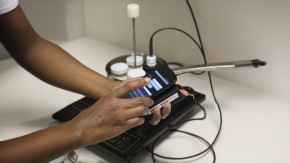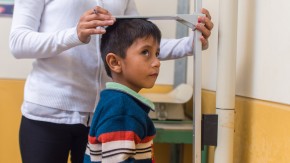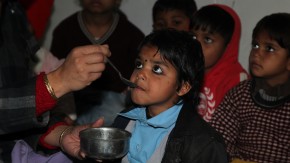
The tuberculosis bacterium (Mycobacterium tuberculosis, or Mtb) is really good at hiding. Sometimes the infections it causes progress straight to full-blown tuberculosis disease within six months. But the vast majority of the time the bacterium heads for the lungs and just...goes to sleep. In fact, researchers estimate that that majority comprises 2 billion people, most of them in poor countries. Most of these infections will never wake up. But at some point in their lives, about 10 percent of people will see their latent tuberculosis infection (LTBI) "reactivate," either seemingly at random or in response to medication or other infections, and those people will develop tuberculosis disease. In other words, there are 2 billion tuberculosis time bombs in the world, and 200 million of them are ticking. Even worse, we have no idea which ones they are. Dr. Philana Ling Lin, however, may be about to change that.
The story goes back more than a decade, to 2005, when a group of researchers led by Dr. Douglas Young won a Grand Challenges in Global Health grant. Working with Dr. JoAnne Flynn, they used the grant to develop a new technique for working with tuberculosis: a combined PET scan and CT scan. Using this new method, they were able to examine Mtb lesions, or granulomas, much more closely than they could using either technology alone. What they discovered, to their surprise, was that LTBI and tuberculosis disease weren't binary - rather than being either active or inactive, Mtb lesions were on something of a spectrum. Some of them were completely asleep. Others were active but not active enough to overcome to the body's immune system. Still others were waging a war - and winning.
This gave Dr. Lin an idea. If she used this new technology to look at what happened during Mtb infection, she might find a difference between an infection that progressed straight to tuberculosis disease and one that stayed latent. So in 2009, with a Grand Challenges Explorations grant to explore latency in tuberculosis, she monitored monkeys who'd been infected with Mtb, and what she found was that there was indeed a difference: In latent infections, lesions stopped growing within several months of infection; after that, they just stayed dormant. Meanwhile, in infections that progressed straight to tuberculosis disease, new lesions kept popping up over time - so many and so quickly that, though latency isn't declared until six months after infection, Dr. Lin found she could tell within just six weeks which monkeys would have which kind of infection.
Now that she could differentiate between latent and active Mtb infections, though, she wanted to go further. With a follow-on grant, she looked only at monkeys with LTBI. After gathering a lot of data about their infections, she gave them all a medication she knew sometimes reactivated latent tuberculosis. When some of them reactivated and some stayed latent, she went back and examined the data on each group. She discovered a pattern: LTBI monkeys in whom the bacterium caused greater lung inflammation or traveled to other organs outside the lung were at much higher risk of reactivation than the other monkeys.
This key opened a door for Lin and other researchers to a whole new way of looking at tuberculosis. Another team, for example, has found that the difference between LTBI that will reactivate and LTBI that won't shows up in human blood as early as 18 months before it happens; Dr. Lin is currently investigating whether that difference shows up in monkeys' blood as well. With each discovery, we get closer not just to identifying the 200 million people whose LTBI will activate but also to curing it before - even years before - they even feel sick.
Tuberculosis is the leading cause of death by infectious disease in the world. Every year, 10 million people develop it, and 1.3 million of them die. There's no way to get those numbers down if there's a mystery store of invisible tuberculosis cases that get added to the pile every year. Thanks to Dr. Lin, though, as well as Dr. Flynn and Dr. Young, we may have discovered a clue that ultimately leads us to a solution.



